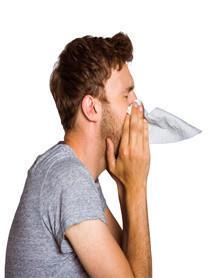Addiction Treatment Programs: Pathways to Recovery and Healing

Medi Pratama is a top Behavioral Analyst in Bandung, Jawa Barat. With a passion for the field and an unwavering commitment to their specialty, Medi Pratama is an expert in changing the lives of their patients for the better. Through their designated cause and expertise in the field, Medi Pratama is a prime example... more
Addiction is a complex, chronic disease that affects the brain and behavior. It not only impacts the individual struggling with substance use but also deeply influences families, communities, and society at large. With the growing awareness of substance use disorders and their profound effects, the best addiction treatment programs in the Valley have evolved into sophisticated systems of care that offer hope, healing, and recovery.
This article explores the various types of addiction treatment programs, their approaches, effectiveness, and the importance of individualized care in addressing the multifaceted nature of addiction.
Understanding Addiction
Before delving into treatment programs, it’s essential to understand addiction itself. Substance use disorders (SUDs) are characterized by an inability to control the use of a legal or illegal drug or medication. Substances commonly associated with addiction include alcohol, opioids, stimulants, benzodiazepines, cannabis, and nicotine, among others.
Addiction is more than a physical dependence—it includes psychological and behavioral components, often accompanied by mental health disorders such as depression, anxiety, PTSD, or bipolar disorder. This dual diagnosis requires integrated treatment that addresses both substance use and co-occurring mental health conditions.
Goals of Addiction Treatment
The primary goals of Joint Commission accredited treatment in Scottsdale include:
- Stopping substance use
- Maintaining long-term abstinence
- Improving overall functioning
- Preventing relapse
- Addressing underlying causes and co-occurring conditions
These goals are achieved through various evidence-based therapies and support systems tailored to each individual's needs.
Types of Addiction Treatment Programs
1. Detoxification (Detox)
Detox is often the first step in treating addiction. It involves medically supervised withdrawal from the substance in a safe environment. Depending on the substance and severity of use, detox may involve the use of medications to ease withdrawal symptoms and prevent complications.
While detox is critical for physical stabilization, it is not a standalone treatment. It must be followed by comprehensive therapy to address the root causes of addiction.
2. Inpatient Rehabilitation (Residential Treatment)
Inpatient rehab programs require individuals to live at the treatment facility for a specified period—typically 30, 60, or 90 days. These programs offer intensive, structured care and 24/7 supervision, making them ideal for individuals with severe addiction or co-occurring disorders.
Key features include:
- Individual and group therapy
- Medical care and medication management
- Psychoeducation
- Family therapy
- Recreational and holistic therapies (e.g., yoga, meditation)
3. Outpatient Programs
Outpatient treatment allows individuals to live at home while attending therapy sessions regularly. These programs range in intensity:
- Standard Outpatient Programs (OP): Offer basic therapy and support, usually a few hours per week.
- Intensive Outpatient Programs (IOP): Require more frequent sessions (typically 9-20 hours/week), offering a middle ground between inpatient and outpatient care.
- Partial Hospitalization Programs (PHP): Provide comprehensive care during the day (often 5-7 hours/day, 5 days/week) but allow the patient to return home at night.
Outpatient programs are suited for those with a strong support system and less severe addiction.
4. Medication-Assisted Treatment (MAT)
MAT combines behavioral therapy with medications approved to treat specific substance use disorders. It is most commonly used for opioid, alcohol, and nicotine addiction.
Examples of medications include:
- Methadone, buprenorphine, naltrexone (for opioid use)
- Disulfiram, acamprosate, naltrexone (for alcohol use)
- Nicotine replacement therapy, bupropion, varenicline (for tobacco use)
MAT reduces cravings and withdrawal symptoms, enhancing the chances of long-term recovery.
5. Therapeutic Communities (TCs)
TCs are long-term residential programs (6–12 months) that focus on the re-socialization of the individual. They emphasize the development of personal responsibility, accountability, and constructive social behaviors.
Residents participate in structured activities and peer-led support in a communal setting. These programs are particularly beneficial for those with long-standing addiction and legal issues.
6. Dual Diagnosis Treatment Programs
For individuals with both a substance use disorder and a mental health condition, dual diagnosis treatment is crucial. These programs integrate mental health and addiction services, ensuring both conditions are treated simultaneously.
Treatment may include:
- Cognitive Behavioral Therapy (CBT)
- Dialectical Behavior Therapy (DBT)
- Psychiatric care and medication
- Trauma-informed therapy
7. 12-Step and Peer Support Programs
While not formal treatment, 12-step programs like Alcoholics Anonymous (AA) and Narcotics Anonymous (NA) provide vital peer support. These programs promote abstinence and spiritual growth through a series of guiding principles.
Non-12-step alternatives (e.g., SMART Recovery, LifeRing) offer secular and evidence-based approaches to peer support.
Personalized and Holistic Approaches
Modern addiction treatment emphasizes individualized care. No single treatment works for everyone. Personal factors—such as the type of substance used, duration of use, mental health status, family dynamics, and socio-economic background—must be considered when designing a treatment plan.
Holistic therapies are often integrated to support overall wellness, including:
- Art and music therapy
- Physical fitness programs
- Nutrition counseling
- Mindfulness and meditation
- Equine therapy
These therapies enhance engagement, reduce stress, and promote long-term emotional and physical health.
The Role of Aftercare and Relapse Prevention
Recovery doesn't end with the completion of a treatment program. Aftercare is critical to maintaining sobriety. It may include:
- Continued therapy
- Support groups
- Sober living homes
- Relapse prevention planning
- Career and life skills training
Relapse is common but not a sign of failure—it’s an indication that the treatment plan needs adjustment. Effective relapse prevention strategies include recognizing triggers, developing coping mechanisms, and maintaining a strong support network.
Conclusion: A Journey of Recovery
Addiction treatment programs offer a path toward healing, but recovery is a lifelong journey. Success requires commitment, support, and a comprehensive, person-centered approach. As understanding of addiction continues to evolve, so too will the methods and accessibility of treatment.
For individuals and families facing addiction, it’s important to know that recovery is possible. With the right program and support, people can reclaim their lives, restore relationships, and build a fulfilling, substance-free future.









